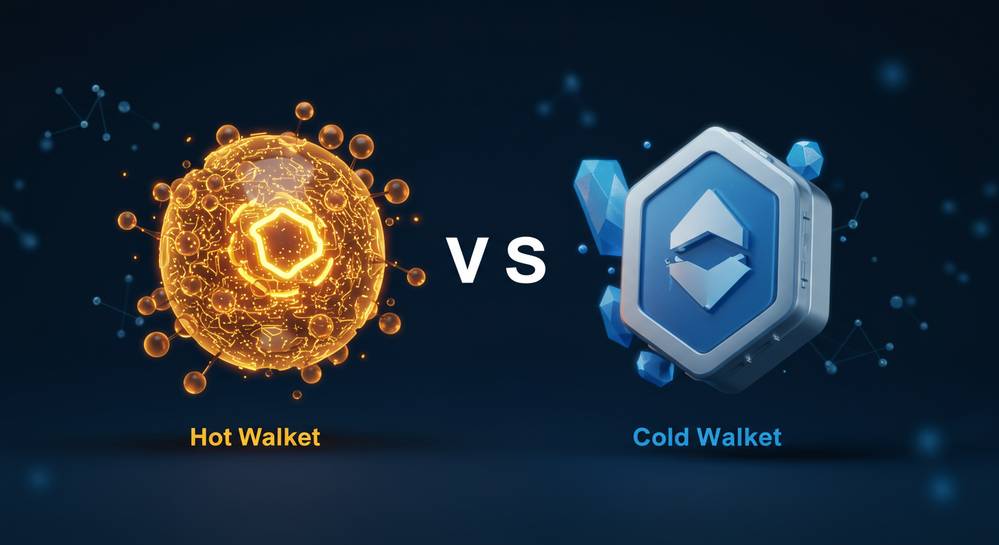As digital assets grow in value, the need for robust security has never been more critical. Knowing how to secure crypto wallet is the most important skill for any crypto user. This guide provides a comprehensive, step-by-step approach to protecting your funds from hackers, scammers, and loss. We will cover fundamental principles and actionable strategies to ensure your assets remain safe and under your control.
Understanding the core of wallet security private keys and seed phrases

Understanding the core of wallet security
Before exploring how to secure a crypto wallet, you must grasp what you are truly protecting. Your wallet does not hold your digital assets directly. Instead, it manages your private keys, which are the cryptographic data that prove your ownership and grant access to your funds on the blockchain. This distinction is the most critical concept in self-custody and foundational to proper security.
- Private Key: This is the secret password that authorizes transactions. If an unauthorized person gains access to this key, they gain full control of your funds. It must remain absolutely confidential.
- Seed Phrase: This is your master recovery key, typically a list of 12 to 24 words. It can restore your entire wallet if your device is ever lost, stolen, or damaged.
Losing access to either your private key or seed phrase results in the irreversible loss of your crypto assets. Unlike traditional finance, there is no reset button or central authority to appeal to. Therefore, every security measure is designed with one ultimate goal: to shield these two critical pieces of information from theft and loss at all costs.
Choosing the right type of wallet hot vs cold storage

Your first critical decision in learning how to secure a crypto wallet is selecting the right type. This choice fundamentally defines your security baseline. Wallets are broadly categorized by their connection to the internet, creating two distinct groups: hot wallets and cold wallets. Understanding this trade-off between convenience and security is essential for protecting your assets effectively.
Hot wallets for convenience
Hot wallets are software that remains connected to the internet. This category includes mobile apps, desktop programs, and browser extensions. Their primary advantage is providing quick and easy access to your funds for frequent activities, such as trading on a undefined. However, this constant online presence is also their greatest vulnerability, making them a prime target for hacking, malware, and phishing attacks.
Cold wallets for maximum security
Cold wallets, primarily hardware wallets, store your private keys in a completely offline environment. These physical devices are isolated from the internet, creating an air-gap that shields your keys from online threats. Transactions are signed within the secure device itself before being broadcast to the network. This method is widely considered the gold standard for long-term storage and securing significant amounts of cryptocurrency, as it makes remote theft nearly impossible.
Essential security practices for any crypto wallet
Adopting strong security habits is non-negotiable for protecting your assets. These practices create critical barriers, especially for internet-connected hot wallets. They are the foundation of how to secure a crypto wallet against the most common threats you will face.
- Create a strong, unique password: Never reuse passwords across services. Combine uppercase letters, numbers, and symbols to build a formidable first line of defense against unauthorized access.
- Enable app-based 2FA: Always activate two-factor authentication using an authenticator app. This method is far more secure than SMS, which is vulnerable to SIM-swapping attacks.
- Beware of phishing scams: Be skeptical of all unsolicited links and messages. Scammers create fake sites to steal your keys. Knowing what a undefined looks like is vital.
- Keep software updated: Regularly update your wallet app, browser, and operating system. These updates contain crucial security patches that protect you from newly discovered vulnerabilities.
- Download from official sources: Only get wallet software from the official website or trusted app stores like the Google Play Store to avoid malicious counterfeit applications.
Advanced security strategies and ongoing vigilance

Secure your seed phrase offline
Long-term security requires making your seed phrase digitally inaccessible. Never store it as a screenshot, text file, or in any cloud service like Google Drive. A digital copy is a primary target for hackers. Instead, write it on paper and keep it in a secure, private location. For maximum durability against fire and water damage, engrave your phrase onto steel plates. This physical-only approach is a core part of how to secure a crypto wallet.
Use a dedicated and clean device
For serious investors, managing crypto on a dedicated device is a powerful strategy. This computer or phone should be used for nothing else, no general browsing, emails, or software downloads. This practice creates a clean environment, drastically reducing the attack surface and minimizing the risk of malware that could compromise your assets.
Recognize social engineering attacks
Stay vigilant against sophisticated psychological manipulation. Attackers create a false sense of urgency with fake airdrops or impersonate support staff to trick you. Always verify information through official channels. Remember that no legitimate project or person will ever ask for your private keys or seed phrase.
Securing your digital assets is not a one-time setup but a continuous commitment to vigilance and best practices. By understanding what you are protecting, choosing the right wallet, and applying layered security measures, you build a formidable defense against threats. Your financial sovereignty in the crypto space depends on it. For more expert guides and analysis, visit Blockchain Solve.

